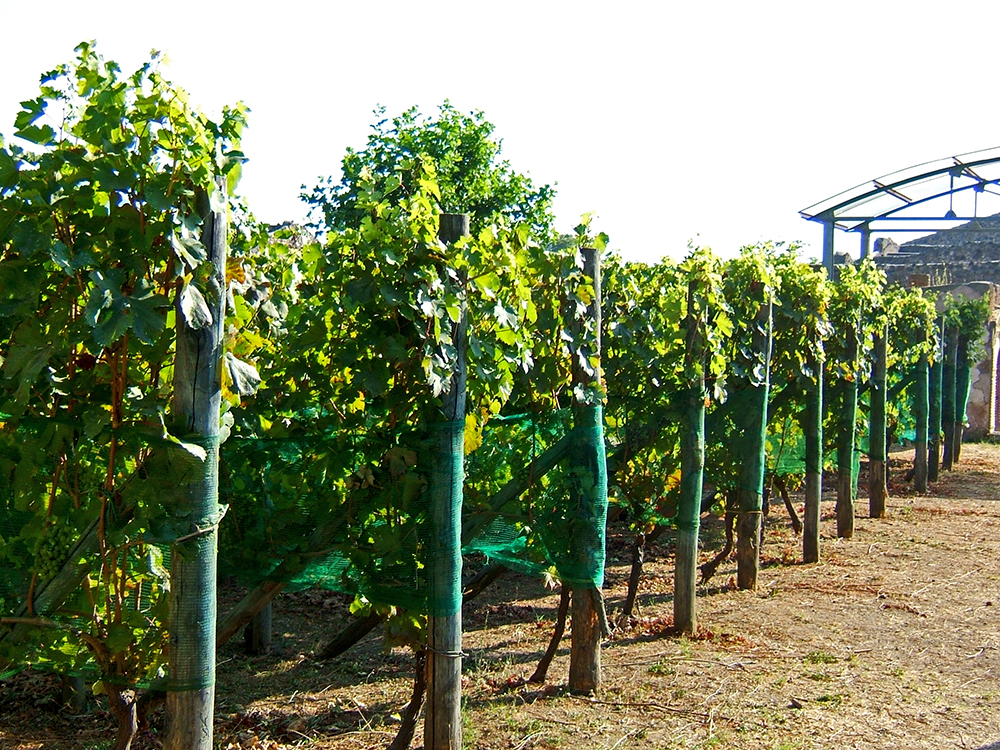Have ever wondered what sort of wine was served in an ancient Roman banquet? You know, the kind made famous by TV dramas like I Claudius, where guests lounged for hours, picking at sumptuous delicacies and were entertained by musicians and artists from around the world? Well now you can savor at least one wine reconstructed from ancient varietals in the area near Pompeii.

The Villa of Mysteries project based in the Mastroberardino Winery in the Campagnia region of Italy, sells wines that are mixed from several varietals that have a long history in the region. Working with the Archaeological Superintendent of Pompeii, the vintners had DNA testing of wine residues from the archaeological record performed, and unearthed frescoes and architectural sites to piece together ancient viticulture techniques. They then selected varietals and root stock that were a close match to the DNA from the roman wines. The first vintage was auctioned off in 2001 and proceeds were used to fund the restoration of the Foro Bario wine cellar in the Pompeii archaeological park. Since that time the Mastroberardino family has also reconstructed the vineyards inside the ruins Villa dei Misteri – known for its stunningly well-preserved frescoes – on the outskirts of Pompeii.
The bottle we had was from the 2003 vintage and it was composed of 90% Piedirosso and 10% Sciascinoso grapes. It was delicious, with aromas of cherries, plums and raspberries, and a hint of black pepper in the taste in addition to the fruit essences. I have to say, however, that I found the body to be a bit thin – something more like a modern Chinese wine, than a modern European one. Since 2011, the composition of the blend has changed to: 50% Piedirosso, 40% Aglianico, and 10% Sciascinoso, which may have helped make the body fuller.
The Mastroberardino vineyards occupy more than 750 acres are at the base of Mt. Vesuvius known for its volcanic, loose soils, that are very rich in minerals and well-draining. The vines are grown using the ancient Roman pole-training technique which allows for the vines to be planted very close to one another.

Years ago, I worked with a vintner to come up with a modern recipe for oenogarum – the ancient Roman ingredient and condiment that mixes wine with garum. On his advice, we used one of his Syrahs as the wine base. It was fabulous – and I recommend you try it if interested.
The actual winemaking process for the Villa of Mysteries wine is modern and unfortunately probably influences the taste of the final product. The modern wine is fermented in stainless steel, and then aged in oak barriques before bottling. If they used qvevri like the Georgians and Armenians, that process would be much more like the technique of ancient Roman winemaking, and produce an even more authentic product.
As a warning, I have to note that the Villa of Mysteries wines have pretty steep pricetags, and I don’t recommend that you use them to make oenogarum unless your last name is Gates, Bezos, or Musk. A favorite, reliable table wine of quality will do just fine.
(Words by Laura M. Kelley. Photos of bottle and frescoes from Mastroberardino website. Photo of Villa of Mysteries Vines by Andy Hay from Wikimedia)


Laura could you contact me. Dan Macey, president Historic Foodways Society of the Delaware Valley (Philadelphia). http://www.historicfoodways.org I’m interested in having you speak at a program for us.